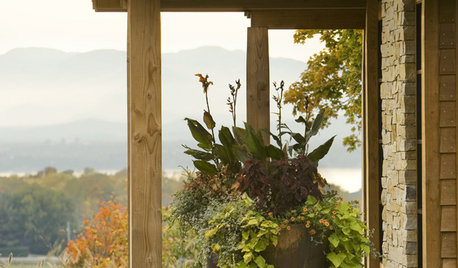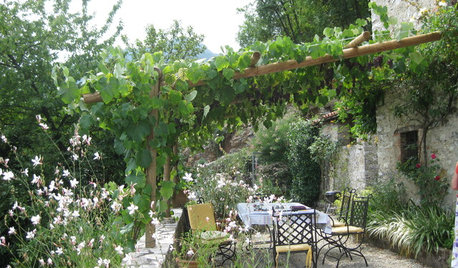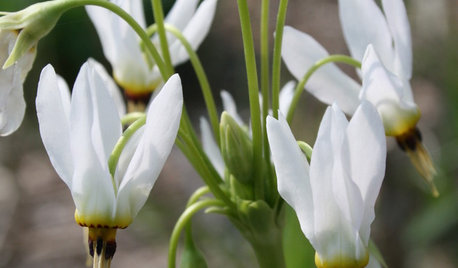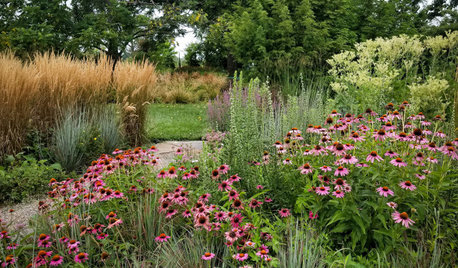Wild Cyclamen
dottyinduncan
14 years ago
Related Stories

GARDENING GUIDESGrow a Beautiful Fall Garden in a Pot
Welcome autumn with 7 gorgeous plants that thrive in containers and enliven your porch or patio throughout the cooler season
Full Story
GARDENING GUIDESHouzz Call: What’s Your Favorite Backyard Beauty?
The simple, honest daisy is this writer’s go-to garden flower. We want to hear which plant, flowering or otherwise, gives you special joy
Full Story
LANDSCAPE DESIGNRecipe for Mediterranean Edible Garden Style
The only thing better than a delicious meal outdoors is the satisfaction of growing some of the key ingredients yourself
Full Story
GARDENING GUIDESGreat Design Plant: Dodecatheon Meadia
Shooting star is a unique prairie ephemeral and will add a galaxy of interest to your eastern North American garden
Full Story
WINTER GARDENING6 Reasons I’m Not Looking Forward to Spring
Not kicking up your heels anticipating rushes of spring color and garden catalogs? You’re not alone
Full Story
FALL GARDENING20 Favorite Flowers for the Fall Landscape
Vivid blooms and striking shapes make these annuals and perennials a delight in autumn gardens
Full Story
PETSGarden Alert: 22 Plants to Keep Away From Pets
Avoid potential danger by keeping dogs and cats away from these landscaping and houseplant favorites
Full Story



Embothrium
dottyinduncanOriginal Author
Related Professionals
Forest Acres Landscape Architects & Landscape Designers · Kapaa Landscape Architects & Landscape Designers · Richmond Heights Landscape Architects & Landscape Designers · Ashburn Landscape Contractors · Azalea Park Landscape Contractors · Darien Landscape Contractors · Lancaster Landscape Contractors · Spring Landscape Contractors · Altadena Fence Contractors · Cherry Hill Fence Contractors · Modesto Fence Contractors · Orlando Fence Contractors · Santa Barbara Fence Contractors · South Yarmouth Fence Contractors · Washington Fence Contractorsgardengal48 (PNW Z8/9)
CathyJ
lilydude
aftermidnight Zone7b B.C. Canada
dottyinduncanOriginal Author
lilydude
gardengal48 (PNW Z8/9)
hallerlake
dottyinduncanOriginal Author
CathyJ